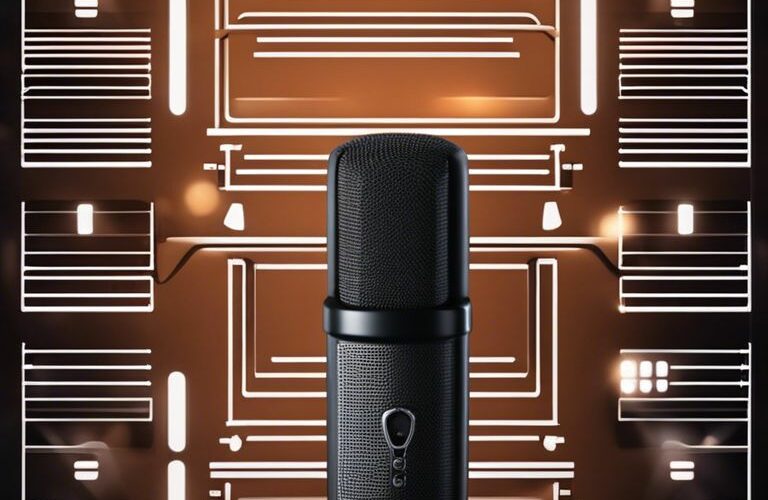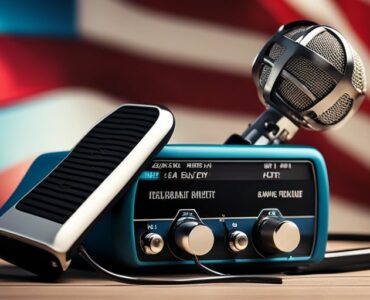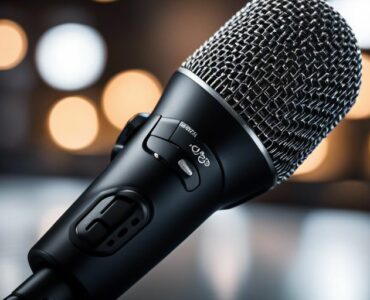Curious about how those noise-canceling CB microphones manage to eliminate all that background noise? Well, you’re in the right place. Noise-canceling CB microphones are built with advanced technology that allows them to filter out unwanted background noise, ensuring that your communication remains crystal clear even in the midst of a noisy environment. These microphones are equipped with built-in noise-canceling circuitry that actively detects and reduces ambient sounds, enabling you to have uninterrupted communication on your CB radio. In this blog post, we’ll delve into the intricacies of how these noise-canceling microphones are designed and engineered to provide you with optimal performance, no matter the noise level in your surroundings.
Table of Contents
Key Takeaways:
- Noise-canceling technology: CB microphones use noise-canceling technology to filter out background noises and only capture the user’s voice.
- Dynamic elements: These microphones use dynamic elements to capture and amplify the user’s voice while minimizing surrounding noise.
- Close-talking design: CB microphones are designed to be used close to the user’s mouth, allowing them to capture clear vocals while minimizing background noise.
- Unidirectional pattern: The microphones have a unidirectional pattern, which means they primarily capture sound from one direction, helping to reduce ambient noise.
- Passive noise cancellation: CB microphones also use passive noise cancellation techniques, such as foam windshields, to further reduce background noise interference.
Basic Principles of Sound and Noise Cancellation
One of the key features of noise-canceling CB microphones is their ability to reduce background noise and deliver clear communication. These microphones achieve this through the application of sound and noise cancellation principles, which are essential to understand for anyone looking to maximize the performance of their communication device.
Understanding Sound Waves
When you speak into a CB microphone, sound waves are created and travel through the air to reach the receiver. These waves consist of alternating areas of high and low air pressure, which our ears interpret as sound. However, unwanted background noise can interfere with these waves, making it difficult for your message to be clearly understood by the listener.
Active vs. Passive Noise Cancellation
When it comes to noise cancellation, there are two primary methods – active and passive. Passive noise cancellation relies on physical barriers or materials to block out background noise, while active noise cancellation uses advanced technology to neutralize unwanted sounds. CB microphones incorporating active noise cancellation are able to analyze incoming audio signals and generate anti-noise signals to effectively cancel out background noise, resulting in clearer communication for you and your audience.
Components of Noise-Canceling CB Microphones
Clearly, an essential component of noise-canceling CB microphones is the actual microphone itself. These microphones are specially designed to minimize background noise and provide clear communication during CB radio use. One popular noise-canceling CB microphone model is the Ranger SRA-198 CB Radio Noise Canceling Microphone, which has garnered positive reviews for its noise-canceling capabilities.
Microphone Design Features
When it comes to the design of noise-canceling CB microphones, there are specific features that contribute to their noise-canceling abilities. These may include directional microphones that focus on capturing sound from a specific direction, as well as built-in wind and noise screens to filter out unwanted background noise. The positioning of the microphone element and the materials used in its construction are also crucial in reducing interference and capturing clear sound. When selecting a noise-canceling CB microphone, it’s important to consider these design features to ensure you get the best performance for your needs.
Electronic Circuitry for Noise Suppression
In addition to the physical design, noise-canceling CB microphones also employ electronic circuitry to actively suppress background noise. This may include the use of noise-canceling technology that analyzes incoming audio and emits a reverse sound wave to cancel out unwanted noise. Some models may also feature a noise gate function that automatically mutes the microphone when no speech is detected, further reducing ambient background noise. By incorporating advanced electronic circuitry, these microphones can significantly improve the clarity of your communications, even in noisy environments.
How Noise-Canceling CB Microphones Operate
Now, let’s delve into the fascinating world of noise-canceling CB microphones and how they operate. These advanced pieces of technology are designed to filter out unwanted background noise, allowing for clearer communication between you and other users on the CB radio.
Capturing and Identifying Noise
When you speak into a noise-canceling CB microphone, it captures all the sounds in its vicinity, including both your voice and any background noise. The microphone is equipped with advanced technology that can identify and separate the noise from your voice. This is done through the use of directional microphones and electronic filters, which work together to isolate and minimize unwanted sounds.
Signal Processing and Sound Enhancement
Once the noise has been identified, the microphone utilizes signal processing techniques to further reduce the impact of the background noise. The electrical signals from the microphone are analyzed and processed in real time, allowing for the enhancement of your voice while simultaneously suppressing the unwanted noise. The result is a crystal-clear transmission that ensures your message is heard loud and clear by the intended recipient.
Advantages and Limitations
Despite the impressive technology behind noise-canceling CB microphones, it’s important to understand both their advantages and limitations before considering purchasing one for your needs. Let’s take a closer look at these factors to help you make an informed decision.
Benefits of Using Noise-Canceling CB Microphones
One of the primary benefits of using a noise-canceling CB microphone is the elimination of background noise. This allows you to communicate clearly and effectively, even in noisy environments. Additionally, noise-canceling microphones can help reduce listener fatigue during long periods of use, as the clarity of the audio signal remains high, resulting in less strain on the ears.
Potential Drawbacks and Considerations
While noise-canceling CB microphones offer several benefits, it’s important to consider their potential drawbacks. One potential limitation is the higher cost compared to traditional CB microphones. Additionally, some users may find that the noise-canceling technology isn’t 100% effective, particularly in extremely loud environments. It’s important to weigh these potential drawbacks against the benefits to determine if a noise-canceling CB microphone is the right choice for your specific needs.
Conclusion
Now that you understand how noise-canceling CB microphones work, you can appreciate the technology behind the reduction of unwanted background noise. By using advanced circuitry and filtering techniques, noise-canceling microphones are able to isolate and capture your voice while minimizing interference from other sounds. This ensures that your communication remains clear and uninterrupted, even in noisy environments. So, when you’re in need of a reliable and effective communication tool for your CB radio, consider investing in a noise-canceling microphone to improve the quality of your conversations.
FAQ
Q: How do noise-canceling CB microphones work?
A: Noise-canceling CB microphones work by using an advanced technology that filters out background noise and focuses on capturing the user’s voice. These microphones are equipped with noise-canceling circuits that detect and reduce ambient sounds, resulting in clearer and more intelligible communication.
Q: What makes noise-canceling CB microphones effective?
A: Noise-canceling CB microphones are effective due to their ability to distinguish between wanted and unwanted sounds. They utilize various methods such as phase cancellation and frequency filtering to suppress background noise, allowing for better transmission of the user’s voice and improved clarity during communication.
Q: Do noise-canceling CB microphones require any special setup?
A: Noise-canceling CB microphones typically do not require any special setup. They are designed to be plug-and-play devices, compatible with most CB radio systems. However, it is important to ensure that the microphone is properly connected and positioned for optimal performance. Additionally, some models may offer adjustable sensitivity settings for further customization.











Add comment